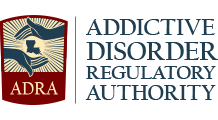Understanding the signs, symptoms, and effects of posttraumatic stress disorder is an important part of the effort to get treatment for your child. At Acadiana Treatment Center in Sunset, Louisiana, we’re proud to be a source of information and comprehensive care for adolescents who have been struggling with PTSD.
Understanding Anxiety
Learn about anxiety
Anxiety is a general term that is typically applied to a category of mental health disorders that are characterized by pervasive worry, overwhelming fear, and related behavioral disturbances. Certain forms of anxiety can also cause an individual to experience physical reactions such as muscle tension, breathing problems, chest pain, and similar distress.
The conditions within the general category of anxiety are referred to by clinical professionals as anxiety disorders. The various types of anxiety disorders are differentiated by which symptoms a person experiences; which objects, situations, or events precede the onset of symptoms; and how these symptoms develop.
Anxiety disorders can affect individuals of all ages, including adolescents. Virtually every adolescent will experience periods of fear or worry. These emotions are both normal and healthy. However, when fear and worry are disproportionate to the threat posed by the triggering object or event, or when these emotions become so intense that they prompt the adolescent to make self-defeating behavioral changes, then an anxiety disorder may be present.
According to the fifth edition of the Diagnostic and Statistical Manual of Mental Disorders (DSM-5), many anxiety disorders develop during childhood. When a young person does not receive proper care, anxiety disorders can persist through adolescence and into adulthood.
When adolescents receive effective professional assistance, they can learn to manage the symptoms of anxiety disorders and avoid the negative effects of anxiety. Recognizing the signs and symptoms of anxiety and understanding the effects of these disorders are important steps toward ensuring that adolescents get the help they need.
Statistics
Statistics about anxiety
The following statistics about anxiety disorders among adolescents have been reported by the U.S. Centers for Disease Control and Prevention (CDC), the National Institute of Mental Health (NIMH), and the Anxiety and Depression Association of America (ADAA):
- Anxiety disorders affect about 32% of adolescents ages 13-18 in the United States.
- Among adolescents, the rate of anxiety disorders is higher among females (38%) than among males (26%).
- About one-third of children and adolescents ages 3-17 who have an anxiety disorder also have depression.
- Experts estimate that as many as 80% of young people who have an anxiety disorder are not receiving the treatment they need.
- About 3% of adolescents who have an anxiety disorder meet the criteria for severe impairment as established by the Sheehan Disability Scale.
Causes & Risks
Causes and risk factors for anxiety
As is the case with most mental health challenges, experts have not identified one sole cause for anxiety disorders among adolescents. However, research suggests that several genetic and environmental factors may raise a young person’s risk for developing anxiety.
The following are common causes and risk factors for anxiety disorders among adolescents:
- Gender (anxiety disorders are more common among adolescent girls than among adolescent boys)
- Family history, especially when an adolescent has a parent or sibling who has also struggled with anxiety or another mental health challenge
- Personal history of other mental health disorders
- Childhood adversity, such as losing a parent to death, divorce, or separation
- Personal history of being physically abused or sexually assaulted
It is important to understand that the presence or absence of any cause or risk factor does not guarantee that an adolescent will or will not develop an anxiety disorder. However, adolescents who experience risk factors such as the ones above have a greater likelihood of struggling with anxiety.
Signs and Symptoms
Symptoms of anxiety
Adolescents who struggle with anxiety may experience a variety of signs and symptoms. The signs and symptoms of anxiety among adolescents can vary depending on their age and developmental level, the type of anxiety disorder they have, the presence of co-occurring disorders, and a host of additional personal factors.
In general terms, though, the following are among the more common signs and symptoms that may indicate that your child is struggling with anxiety:
Behavioral symptoms:
- Altering their behaviors to avoid certain items, places, situations, or people
- Refusing to be in open public spaces or among large groups of people
- Refusing to be in small or enclosed spaces
- Pulling away from family members and friends
- Frequently making statements that indicate disproportionate fear or excessive worry
Physical symptoms:
- Muscle tension
- Fatigue
- Excessive sweating
- Elevated body temperature
- Heart palpitations
- Chills
- Sensation of choking or being out of breath
- Tingling in hands and feet
- Being jittery or incapable of sitting still
- Dizziness
- Stomach pain and nausea
- Difficulty sleeping
Mental symptoms:
- Inability to concentrate or focus
- Indecisiveness
- Poor judgment
- Persistent sense of dread
- Racing thoughts
- Overthinking problems or situations
- Continually expecting the worst possible outcomes
- Pervasive sense of hopelessness or helplessness
- Feeling detached from one’s body or one’s environment
- Assuming that one is always being judged negatively by others
Effects
Effects of anxiety
Untreated anxiety can negatively impact virtually all areas of an adolescent’s life. If your child needs, but does not receive, effective professional care for anxiety, they may have an elevated risk for the following effects:
- Discord within the family
- Strained or ruined relationships with friends and peers
- Academic or behavioral problems in school
- Inability to find or keep a job
- Substance abuse and addiction
- Onset or worsening of co-occurring mental health disorders
- Social withdrawal or isolation
- Loss of hope for the future
- Suicidal ideation
Please note that this is not a comprehensive list of all the potential effects of anxiety. Also, not every adolescent who struggles with anxiety will experience all these effects. However, as this list suggests, failing to receive proper care for anxiety can have a decidedly detrimental impact on a young person’s life.
On the positive side, when your child gets the right type and level of care, they reduce their risk for future harm and can begin to heal from past damage. With effective professional help, your child can learn to manage the symptoms of anxiety, avoid future negative effects, and achieve improved mental health.
Co-Occurring Disorders
Common co-occurring disorders among adolescents who have anxiety
Adolescents who struggle with anxiety may also have an increased risk for certain other mental health disorders. Clinicians refer to the simultaneous presence of two or more mental health conditions as “co-occurring disorders.” The following are among the more common co-occurring disorders that can impact adolescents who are also dealing with anxiety:
- Bipolar disorder
- Substance use disorders (the clinical term for addiction)
- Depression
- Posttraumatic stress disorder (PTSD)
- Eating disorders
The possible presence of co-occurring disorders is another reason why it’s vital to get effective professional care for adolescents who are exhibiting the signs and symptoms of anxiety. When you choose a reputable program that can identify and address any co-occurring disorders, you put your child in the best position to experience true and lasting healing.












